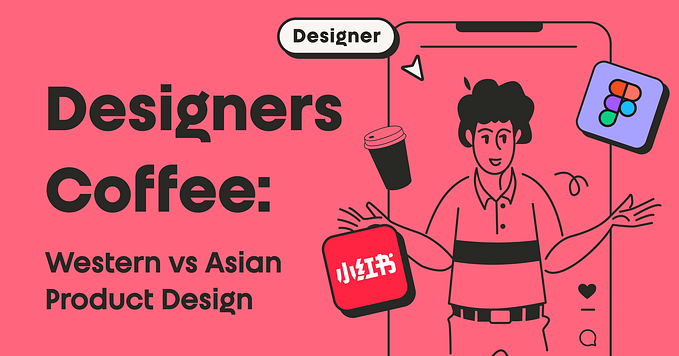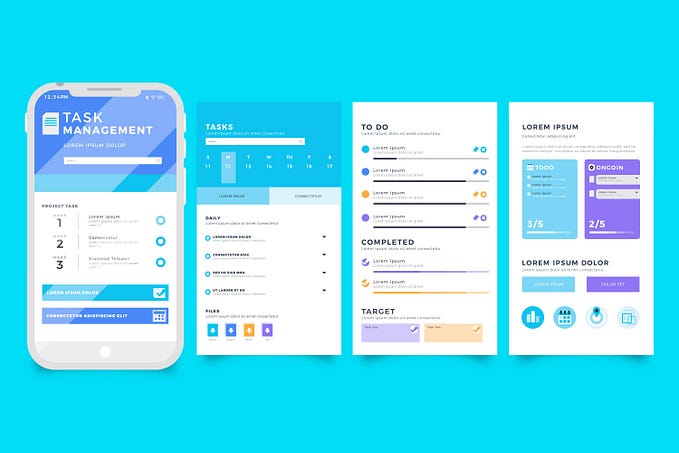Vulnerability in Design
Is there a secret to being a great designer? What do great designers all have in common? Is it purely based on talent and a keen eye, or is it something more?

As (UX) designers we are told that in order to make an impact, we need to have empathy in abundance. Empathy is considered one of the most highly valued skills a designer can possess. But what does that really mean? Is empathy something we can acquire or build upon, or is it something we either have or don’t have? Or has it become a buzz word that is thrown around carelessly?
Something important that many of us are missing here is you can’t have empathy without vulnerability.
Enter the “aha!” moment
Not long ago, a friend introduced me to the works of Brene Brown. I had heard of Brown before and knew a little about her because of her popularity, but nothing in great detail.

Brown is a research professor at the University of Houston, who has spent the past two decades studying courage, vulnerability, and shame. She is a well-published author, and her TED talk, “The Power of Vulnerability,” is one of the top five most viewed, with over 40 million views (now including my own).
I will admit I was a bit hesitant at first because of my impression of her being more of a “self-help” guru, but I found her Netflix special, “Brene Brown: A Call to Courage,” and watched it soon after the discussion I had had with my friend. I heard what Brown had to say and was fascinated. I paused every so often and took notes as she introduced concepts regarding shame and embracing the uncomfortable. I had to learn more, so I combed through her research to learn as much as I possibly could about her work.
I started reading her book, “Daring Greatly” and I think I made it to chapter 3 before a switch flipped in my head and I made the connection between vulnerability, shame resilience, and design.
What had started out as a venture into my own self-improvement had evolved into a professional curiosity.
I listened to several podcasts that featured Brown discussing her work and applying it to the creative process. Again, I found myself pausing and taking notes regarding her thoughts on creativity. While these were very informative and applied to several facets of design, I found nothing specific that applied to the user-centered design process or user experience, so I decided to pursue this topic and connect my own dots. I started my search to see if anyone else in the design world had investigated this or written anything in-depth about these connections.
In my search, I found that while many designers understand the value of empathy, the attempts to develop and hone this skill feel somewhat shallow. There have been many people who have tried to address the power of empathy, but many involve sets of “guidelines” or “rules” on how to be more empathic and lack a certain depth of meaning or a core understanding of the way actual human beings operate.
After further exploration, I discovered numerous websites and blogs around the “UX Hall of Shame” that pick and poke at various user interfaces that show a blatant lack of understanding towards usability. Then I came across an article by Vivianne Castillo, a Senior Design Researcher at Salesforce, entitled; “Ethics & Power: Understanding the Role of Shame in User Research. Castillo has a background in psychology in the arenas of trauma counseling, addressing issues like shame, empathy, vulnerability, and compassion which she also spoke about at the 2018 UXR conference in Toronto.
In her article, Castillo wrote about her concerns around the usage of the word “empathy” within the tech community and how its overuse has led it to become a cliché’. She then dove deeper into the field of user research, describing it as “one particular field that I suspect is infected with the greatest sense of pride about understanding and practicing empathy.” Castillo then went into great detail about pride being, “one of the greatest professional hazards for UX Researchers,” and then transitioned to a more in-depth discussion on empathy and Brown’s research on shame. She concluded with the ethical responsibility that UX Researchers have and provided actionable takeaways to improve in these areas.
So, what place does shame hold within user research’s counterpart, design?
While Castillo speaks on empathy and shame in the realm of user research, she doesn’t really talk about the field of user experience design.
While designers should always keep the user in mind, empathy and more importantly, shame, are things that can directly affect the designer, thus impacting their work.
Brown defines shame as, “An intensely painful feeling or experience of believing we are flawed and therefore unworthy of acceptance and belonging.” Her research participants contrasted shame with guilt, which they defined or described as a feeling that results from behaving in a flawed or bad way rather than a flawed or bad self. The main concerns that were related to shame were the feelings of being trapped, powerless, and isolated.
Important facts about shame:
1) We all have it. It is our most primitive human effect.
2) Nobody wants to talk about it.
3) The less we talk about it, the more we have it. Shame hates words wrapped around it.
Brown identified that some of the most common “shame triggers” revolve around appearance, speaking out, professional identity and work.
All human beings have the tendency to attach their self-worth to their work, from what they do to how well they do it, but Designers, being what Brown refers to as “creatives,” have a tendency to do this more so than say, an accountant. This is most likely due to the fact that designers often have trouble separating themselves from their work because so many of them put so much of themselves into what they make. So, when our work is not received well or is highly criticized, we experience feelings of shame. Brown describes this usually taking the form of, “This is shit, my work is shit, I’m shit.” She says we have trouble fully understanding, “What I produce is as part of me and a reflection of me, but it is not me.”
Why is it important for designers to understand vulnerability?
In the ”Being Boss” podcast, Brown states, “You don’t get to be a creative and not fall on a regular basis. Every time you show someone your work.” It takes a great deal of vulnerability to “embrace the uncomfortable” and put yourself, or your work out there. Many people equate vulnerability with weakness; Brown, however, says practicing vulnerability takes courage and shows bravery.
As designers, we have to focus hard on not taking critique personally. When we attach ourselves and our self-worth to our work this is incredibly hard to do. Every time we put our work out there, be it a design or an idea, we take a risk. Without taking that risk, however, there can be no reward.
Embracing vulnerability is essential for growth on not only a professional level, but a personal one. In order to do this, it is essential to acknowledge where vulnerability exists within us as designers. When we practice awareness, we are less likely to be caught off guard or experience the emotions fed by shame and if we do, we are more likely to bounce back and detach these things from our self-worth. This practice of vulnerability awareness is at the core of Brown’s Shame Resilience Model. She states that it is impossible to acknowledge vulnerability when we don’t feel like we can reach out for support. Having the ability to do so implies a level of trust and a “safe space” to share or ask for help or feedback. Being able to identify those individuals who you trust and whose opinions matter most is essential in building that trust. For this reason, holding design critiques or feedback sessions regularly with other designers or team members is a crucial part of the practice. When these critiques are held regularly, it helps to build trust with those involved. Taking it a step further, establishing guidelines for these critiques with your team will help to create an environment that allows for an open exchange of ideas and that will provide a productive, safe space for all of those involved.
Since it is never a good idea to design in a vacuum, bringing a group together for the sole purpose of improving one’s work is essential for any good design practice. This can be through design reviews, standalone critiques, or impromptu feedback from colleagues. In order to hold an effective critique, it’s vital to create a safe space and build rapport with your team. Here are a few fundamentals to follow in order to do this;
Build a “safe space”. If your team members don’t feel safe they won’t want to show vulnerability or share when they’re struggling. Showing vulnerability is easier said than done, but it’s vital to developing trust and without vulnerability, creativity doesn’t exist.
Trust is essential. People are more receptive to feedback from individuals they trust and can become defensive towards those they don’t trust which usually leads to ignoring any criticism from them.
Assign a facilitator. It’s the facilitator’s job to serve as a neutral party and keep the conversation relevant and constructive. Having someone in a neutral role helps keeps the group on track and helps prevent the individual presenting feeling like they’re in front of a firing squad.
Show respect. Everyone should be “present”. This doesn’t mean they need to physically be in the room, but they should be engaged in the conversation and not working on other things. A good way to do this is to limit the use of devices to only those presenting work.
Set goals for each session and provide actionable feedback. Individuals can’t improve what they’re working on if they don’t know where to start and keep in mind the goal of not only what can be improved, but what has already been well executed.
Critique and feedback sessions shouldn’t be something people dread. Your team should walk away from these sessions knowing they have people they can rely on and most importantly, a team they can trust.
References:
Brown, B. (2006). Shame Resilience Theory: A Grounded Theory Study on Women and Shame. Families in Society, 87(1), 43–52. https://doi.org/10.1606/1044-3894.3483
https://uxdesign.cc/ethics-power-understanding-the-role-of-shame-in-ux-research-dafc08bd1d66








